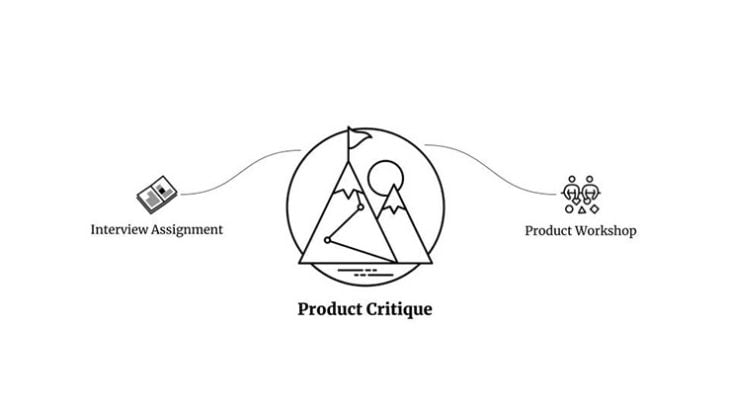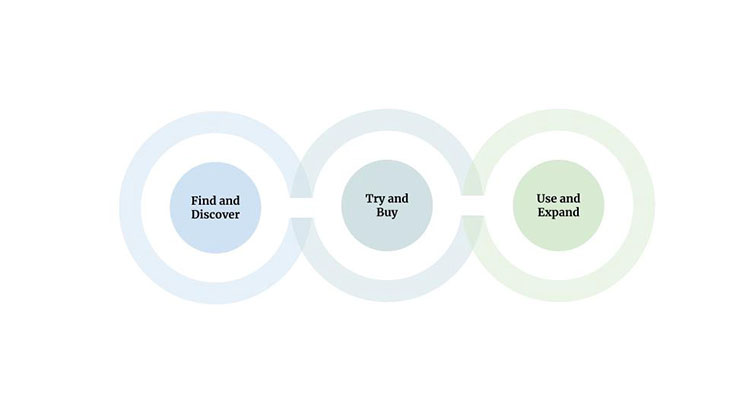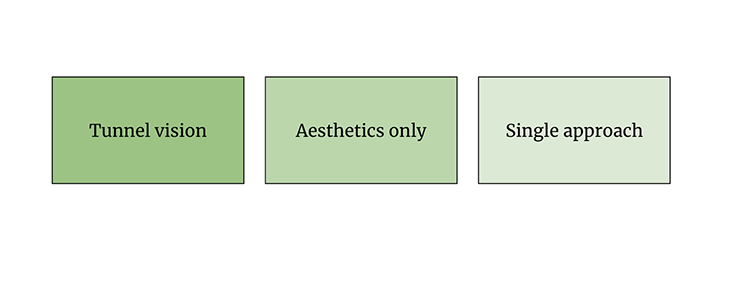To critique or not to critique, that’s the question. The answer? It is definitely to critique.
I personally ask for it when working for leaders and managing team members or stakeholders. Why? Because it helps me improve both professionally and personally.
As long as views, feedback, critiques, or comments are provided, I am all good. It helps me to understand, learn and improve, and it shows me others are keen to see me succeed as well.
When silent [insert cricket sound] I get worried. Either they don’t care or feel it isn’t worth spending their energy on (anymore), which I interpret as someone who has given up on me.
Critique is a gift, regardless of the form presented — though I also prefer to receive it constructively. Then again, an unfiltered, raw emotion shows how much someone cares, so I am not that bothered by those either.
In my view, the same applies to a product, meaning product critiques are gifts too.
Table of contents
- What are product critiques used for?
- When should product critiques be held?
- Questions to ask in a product critique
- How to approach the process with an open mind
- Best practices for leading a product critique
- Popular frameworks for product critique
- Pitfalls to avoid
What are product critiques used for?
Product critiques exist to get an unbiased and honest view of the product from those involved in creating and evolving the product and those eager to join the team to do so.
A product critique aims to improve the product experience, and more specifically design and usability.
For product managers and designers, it is an essential skill to master. Truly understanding what makes a great product a great one, as well as how customers interact with the products, enables us to make the product what the customer needs it to be.
When should product critiques be held?
With product managers and designers being two essential groups benefiting from product critiquing, product critiques typically happen on two occasions — a candidate interview assignment and a product workshop:

Product critiquing as part of the interview process
It is a great way to get well-thought-through feedback on a product and, at the same time, validate the design and/or product management skills of a candidate.
A product critiquing exercise as part of the job interview process is a personal favorite of mine. Not only by reading those submitted by candidates but also by doing them, it keeps my product spidey senses strong.
In the interview, the candidate is asked to try, analyze, and evaluate a product and present constructive feedback and improvement ideas.
Though probably mostly used for interviews for product designers, it is great to see product critiquing increase as a practice used in product manager interviews as well.
Product critiquing by an internal group of experts
Within a product organization, there are a couple of key stakeholder groups working together who have great insights into what resonates with customers and whether or not the product is meeting the product’s objectives.
The second opportunity is a workshop facilitated by the product manager or designer and a group of 5–7 stakeholders. The stakeholder group is made up of product managers, designers, developers, marketers, and more internal employees, as well as business stakeholders who provide feedback. All of this is done following the rules set by the facilitator.
Questions to ask in a product critique
When doing a product critique, keep the customer lifecycle in mind when forming questions. It looks something like this:

Find and discover
The main purpose here is to understand and analyze the product before its first use. The questions revolve around how customers are made aware of the product.
Example questions
- How are you made aware of the product?
- In one sentence, what type of product do you believe this is?
- Who do you think this product is aimed at?
- What problem do you think this product resolves?
- What are your expectations before using it for the first time?
- What did you think about the tone of messaging?
Try and buy
Next, understand the trial and onboarding experience. The aim here is to have evaluators activate and become beginners. It is essential to ensure the trial and onboarding experiences are smooth, efficient, and effective.
Example questions
- How easy was it to acquire the product?
- How easy was it to get started?
- What did you think about the onboarding interaction?
- Was the onboarding experience meeting your expectations?
- How does the onboarding experience compare to that of competitors?
Use and expand
Now, understand how functionality is being used, what was expected, how efficient it is to use the functionality, how the overall experience is, and what the right things to do are to develop and nurture the relationship with customers.
Example questions
- How does the product make you feel?
- Does the product meet your expectations?
- What functionality is easy to understand?
- What functionality is difficult to understand?
- What do you think about the navigation style and why?
- How do the provided animations and gestures make you feel?
- How easily can you perform desired activities efficiently?
- How flexible is the product to cater to personal preferences?
- How does the product compare to the competition?
How to approach the process with an open mind
Whether you are a product critiquing as part of an interview process or as part of a workshop, you must keep an open mind whilst providing your feedback and presenting your observations and insights to avoid them being biased.
Developing tunnel vision might well be one of the biggest traps we product people can fall into. So how do you avoid this?
Go in with a positive mindset by asking a lot of questions and actively seeking information that contradicts your beliefs or hypothesis.
Start with writing down your beliefs or hypotheses. One hypothesis can look something like this:
I believe that [doing this] [for these people] will achieve [the outcome]. I know this is true when I see [the metrics/market feedback].
Then ask questions that try to disprove them.
Best practices for leading a product critique
Leading a product critique workshop within your company? Let’s take a look at a few best practices:

Getting the right mix of people together
The workshop results depend on those involved. There are several people and roles to set up the workshop for success.
The presenter: This is the person leading the workshop. This person provides the context, research information, and decisions made up to this point.
The facilitator: This person is the gatekeeper and timekeeper, helping keep discussions on topic and on time. This person also captures the insights, questions, and concerns that come up. Running this in a startup or smaller organization creates a good chance that the presenter also wears the facilitator hat. If you find yourself in this situation, no worries, you’re a freaking rockstar and you got this!
The critiquer: This person is part of the group that actively participates in the critique and is either a product team member or a business stakeholder.
Preparation sets you up for success
Michael Jordan once said , “Champions don’t become champions when they win an event, but in the hours, weeks, months, and years they spend preparing for it.” The same is true for running a workshop.
Preparation is instrumental to success. Get clarity on the objective, what to present, who to invite, and how to enable them to succeed in being active and effective participants. You do this by providing a structured agenda, guidelines and guardrails, and pre-workshop homework (if any).
Run an engaging product critique
It’s time to run the product critique. If the preparation went well, the critiquers will join the session well-prepared. To get the most out of it ask critiquers to:
- Identify problems first before offering solutions for them
- Be straightforward and direct
- Be specific and link feedback to goals
Following up after the session
To keep critiquers involved and allow for post-workshop feedback, share the discussed and captured outcomes, including follow-up actions.
Popular frameworks for product critique
There are several frameworks that will improve the critiquing. The following are three commonly used.

Jobs-to-be-Done
This framework allows you to define, categorize, and organize the underserved pain points of the customer. It does this by understanding the customer’s goals (jobs) and the processes and steps that lead the customer to achieve them.
In product critiquing, Jobs-to-be-Done helps focus on pain points, narrow the needs that matter most, and create a compelling customer experience to meet them.
Zooming in and out
The danger of digging into a hole by going too deep into specifics is one many product critiquers will recognize. The zooming in and out framework helps to leverage by focusing on three levels:
- Strategic: this level explains why the product exists, what problem it solves, and what the value proposition is
- Functional: tells how the functionalities that help the customer accomplish their goals work
- Aesthetics: show how it looks, how visual design and consistency are achieved, and how it is experienced by the customer
Expert evaluation
Where Jobs-to-be-Done helps define the critical path, expert evaluation helps understand how experts are tackling these problems. The experts can come from practices used by (in)direct competitors, as well as official design recommendations such as Google’s Material Design or Apple’s Human Interface Guidelines.
Pitfalls to avoid
From the aforementioned, you probably already identified some pitfalls to be avoided. Let’s see if you captured the following:

Having tunnel vision
A familiar weakness for product managers and designers is being convinced about their own beliefs. An open mindset and ability to look for information that challenges and disproves those beliefs is needed.
Focussing on aesthetics only
Though aesthetics are important, solely focusing on them will not help customers resolve their pain points and achieve their goals. Use a critiquing framework and balance between focussing on aesthetics and goals to achieve.
A single approach to product critiques
It might be tempting to approach every product critique in the same way. I mean, why change a winning team right? Well, the reason is that even a winning team gets old and ineffective at some point. Moreover, a winning team might be winning from a certain type of opponent yet lose to another.
Be flexible and adopt an approach based on the goal of the product critiquing. Having a set of methods in your back pocket will help greatly to critique the best fit-for-purpose.
In summary
Product critiquing is, besides fun, essential to improving customer experience and making the product what the customer needs it to be. It focuses on key events in the customer lifecycle and needs to be approached with an open mind.
Featured image source: IconScout
The post Effective product critiques: Tips and best practices appeared first on LogRocket Blog.
from LogRocket Blog https://ift.tt/MYS9Lil
Gain $200 in a week
via Read more



